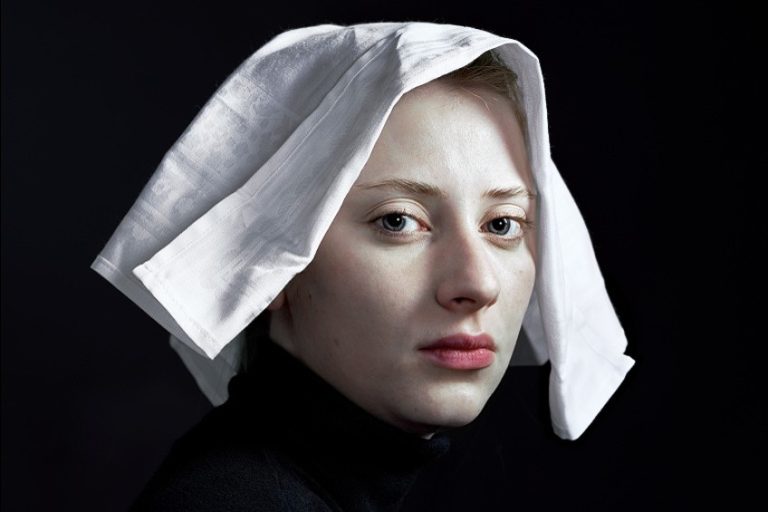What Is Portrait Photography? – Types of Portrait Photography
What is portrait photography and are there different types of portrait photography? Traditional portrait photography is no different than its painterly counterpart, portrait style photography, which portrays a human (or sometimes even animal) portrait. To find out more about the different types of portraits in photography, keep reading below!
What Is Portrait Photography?
Portrait-style photography is a type of photography that is centered on capturing an individual’s likeness, character, and attitude. The main goal of traditional portrait photography is to portray the subject’s personality, feelings, and individuality in a single image. Portrait photography may be utilized for a variety of reasons, including personal mementos, professional portraits for work-related situations, family portraiture, and even creative expression. To convey the essential character of the person in a visually pleasing and emotionally compelling manner, both technical competence and imagination are required. Portraits in photography may be executed in an array of settings, including a studio, outdoors, and even in the subject’s home or office. To achieve a specific mood or ambiance, the photographer can utilize many techniques such as composition, lighting, and posing.

A Brief History of Portrait Style Photography
Louis Daguerre took the first photographic portrait in 1839, which was a self-portrait that took many minutes to create. Portrait photography became more readily available to the broader population after the advent of the daguerreotype process. This was a rather expensive process, but it generated high-quality, detailed photos that were popular among the wealthy and middle class. Portrait photography grew more popular as the 19th century proceeded, and many methods and styles arose. Photographers experimented with posture, costumes, and backgrounds to produce unusual photographs, and taking advantage of natural lighting and outdoor locations became fashionable.
Portrait photography became more readily available to the working classes at the beginning of the 20th century due to breakthroughs in technology and manufacturing costs.
Kodak’s release of the Brownie camera in 1900 opened up photography to the public at large, and portrait studios became widespread. By the mid-20th century, portrait-style photography grew more casual and candid, with photographers trying to capture genuine, unposed situations. With the arrival of digital photography, portraits in photography became even more popular. Today, there are sites such as Instagram and Facebook that are filled with “selfies” – digital photographic self-portraits – yet there are photographers who still specialize in this field.
The Various Types of Portrait Photography
Whereas the portrait paintings of old were pretty standard in their composition, there are many types of portrait photography that the subject and photographer get to choose from to make the image more personalized and unique. There are more traditional portrait photography types like studio portraits, but there are also more creative types that photographers can utilize. Let’s explore a few different types of portrait photography.

Studio Portrait Photography
This type of portrait-style photography involves taking photos of clients in a very regulated studio atmosphere. With a studio portrait, the photographer has complete control over the lighting, backdrop, and other variables that go into making the final image. The studio atmosphere provides constant lighting and avoids distracting background factors that may impact the image.
Portrait photography of this sort is typically used for corporate headshots, family pictures, and commercial photos.
Studio portraits can be professional or informal, with backgrounds ranging from simple black or white backdrops to a more extensive set complete with decorations and furniture. Some photographers focus on studio portraiture and may have a separate studio area with a variety of lighting sets and backdrops to select from. Studio portrait photography can serve as a wonderful way to exhibit the subject’s individuality while also creating a classic, iconic image.
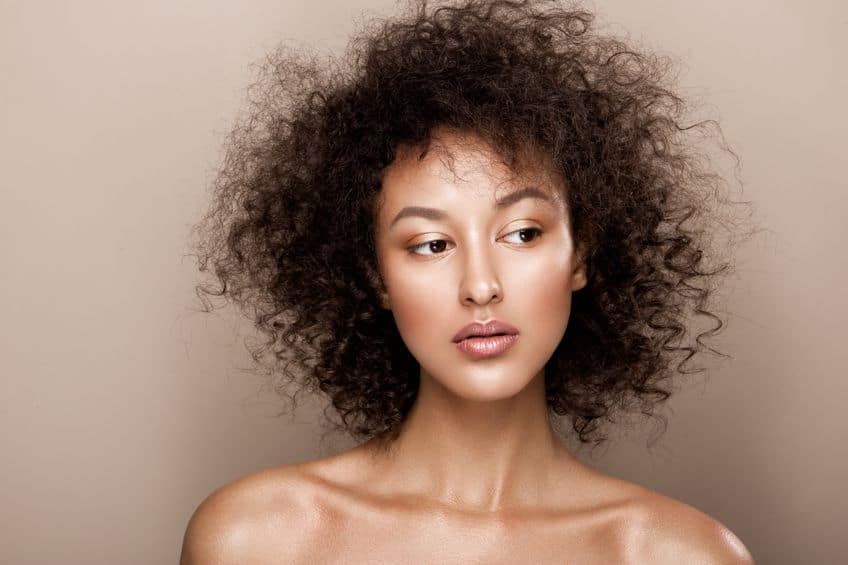
Environmental Portrait Photography
A subject is photographed in their natural environment, such as their residence, place of employment, or a place that has special meaning to them, in an environmental portrait. Environmental portraits, in contrast to studio portraiture, frequently use the subject’s surroundings to effectively tell their narrative and express their individuality or character.
Context and a feeling of closeness and connection between the subject and the observer can be created by the additional surroundings.
Environmental portraits can be staged or impromptu, and the photographer can depict the location using natural light or artificial lighting. This kind of portrait-style photography is commonly utilized for editorial or journalistic reasons, such as periodical features or profiles of famous people.

Candid Portrait Photography
The purpose of candid portrait-style photography is to convey the subject’s essence and individuality without posing or guidance. It all comes down to capturing the moment as it happens, whether it’s a frank expression, action, or connection.
Candid pictures may be shot everywhere, from public settings such as streets or gardens to private occasions such as weddings or birthdays.
To catch the perfect moment, the portrait photographer must be quick and alert, and they can employ a number of techniques to stay unobtrusive and blend into the surroundings. Candid photographs can be difficult to take because the portrait photographer must anticipate the moment and catch it swiftly without tampering with the natural flow of the scene.

Creative Portrait Photography
From abstract and bizarre to humorous and fun, creative portrait photography may include a broad range of styles and approaches. The aim is to portray the subject in a unique and memorable way and to produce photos that are more than simply a simple reflection of the person’s appearance.
To achieve dramatic or unexpected results, portrait photographers can try out different lighting techniques such as employing colored gels, several light sources, or unconventional light positions.
Costumes, decorations, and odd angles or views can also be employed to create a certain mood or ambiance. Using software to modify colors, add various textures, or create strange or magical effects can also play a big part in creative portrait photography.
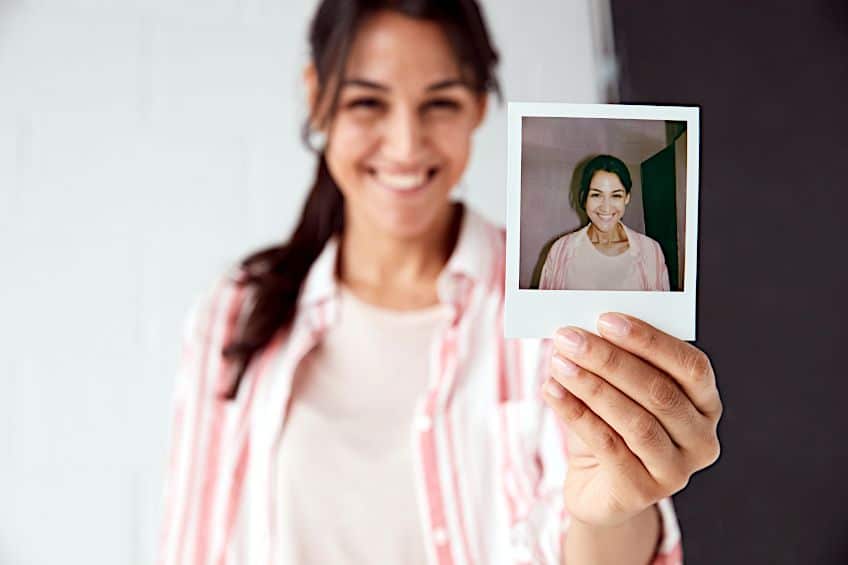
Composition Techniques for Portraits in Photography
Not only are there several types of portrait photography, but there are also many techniques that photographers can use to make their works more unique and captivating. Applying these technical techniques can add to the overall aesthetic quality of the photo.
These techniques include framing, the rule of thirds, lighting techniques, and the use of backgrounds.
Framing
Framing is a compositional technique that includes utilizing elements inside the image to bring attention to the subject while also creating a feeling of perspective and context. Framing can be utilized in portrait photography to effectively isolate the person and highlight their presence within the setting. Objects like trees, entrances, or arches in the surroundings can be utilized to frame the person.

This can provide depth to the scene and help bring attention to them. The surroundings itself can be used to establish an organic framing around the subject, by incorporating a window or a door. When done correctly, framing can be a very effective compositional technique. It can contribute to the creation of a more dynamic and aesthetically appealing photograph while also offering context to the image.
The Rule of Thirds
The rule of thirds is a compositional principle in which your subject is placed on the right or left of a third of a photo, leaving the remaining two-thirds free. While there are various types of composition, the rule produces captivating and well-composed images. The rule of thirds is called that because it gives you four crosshairs with which to target the key areas of a shot. This will guide you in balancing your main subject with negative space in your image in order to establish an effective composition that will capture the viewer’s attention.
Imagine splitting a shot, or even your camera’s viewfinder, into nine identical zones with vertical and horizontal lines, and you’ll have your rule-of-thirds grid — a setting available on most cameras and even your mobile’s camera.
Lighting Techniques
Lighting is a crucial aspect of portrait photography, and there are several lighting techniques that could be employed to produce various effects and styles. Photographers could take use of natural light by setting the subject close to a window or photographing during the golden hour when the lighting is warmer and softer. Rembrandt lighting is a traditional lighting method that includes lighting the subject at a 45-degree angle in order to produce a triangle of light on the subject’s cheek across from the light source. This has a dramatic impact and is utilized in portraits of creative types. Split lighting is the method of spotlighting one side of a subject’s face while keeping the other in shadows.

Use of Backdrops
A backdrop is a flat surface that is placed behind the subject and can be composed of a number of materials including cloth, paper, or even wood. In portrait photography, backgrounds can serve as an important compositional tool. Backdrops assist to isolate the subject and direct the viewer’s focus on the individual being photographed by providing a clean and uniform background. Backdrops come in a range of colors, materials, and patterns, and the backdrop chosen can have a significant impact on the tone and mood of the photograph.
A pure white or black backdrop, for instance, may provide a traditional and timeless appearance, or a vividly colored or patterned backdrop can bring vitality and personality to the photograph.
Portrait Photography Equipment
While we use our phone cameras to take selfies every day, when it comes to professional portraits, we will require something a bit more high-end and reliable. Having the proper equipment will ensure a consistent output and excellent visual quality. Let us check out what equipment is best suited for portrait photography.
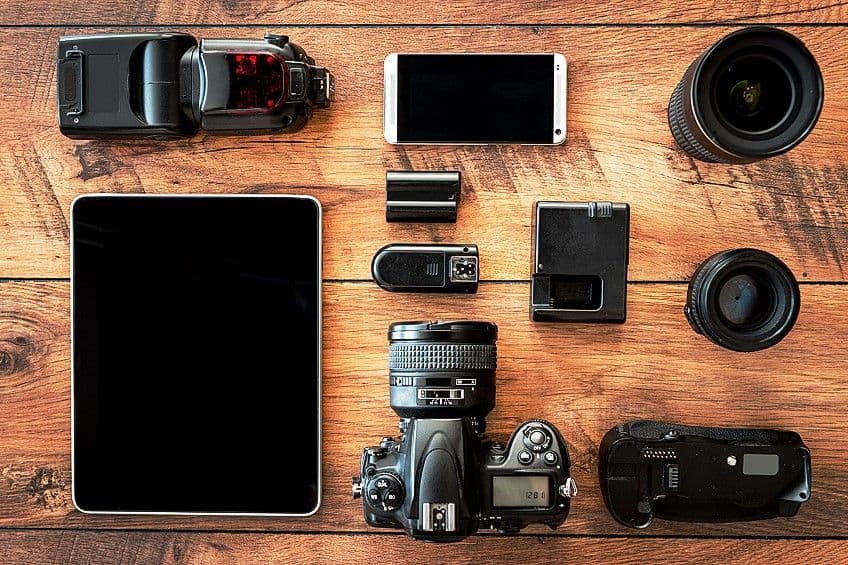
Camera
Selecting the ideal camera for portrait photography may be influenced by a variety of factors, including the sort of photographs you want to capture, your budget, and your degree of photography expertise. The bigger the sensor, the greater the camera’s low-light performance and ability to capture photographs with a shallow field of view. Professional portrait photographers frequently choose full-frame sensors, but they can be more pricey. Portrait photography requires a camera that delivers high-resolution photographs with correct colors and minimal noise. Look for cameras with a large number of megapixels and a wide dynamic range.
For precise, in-focus portraits, a reliable autofocus mechanism is essential. Aim for a camera that has a quick and precise autofocus system.
Lenses
Lenses are a crucial component of portrait photography and have a significant impact on the appearance and feel of your photos. Prime lenses have a set focal length and cannot be zoomed in or out. They are well-known for their clarity and rapid maximum apertures, which make them perfect for achieving a narrow depth of focus and separating the subject from the background. Zoom lenses offer changeable focal lengths, allowing you to zoom in or out by adjusting the focal length. They are more adaptable than prime lenses and may be used to capture many sorts of portraiture. Telephoto lenses are longer in focal length and have a smaller field of vision than conventional lenses. They help to separate the topic from the backdrop.
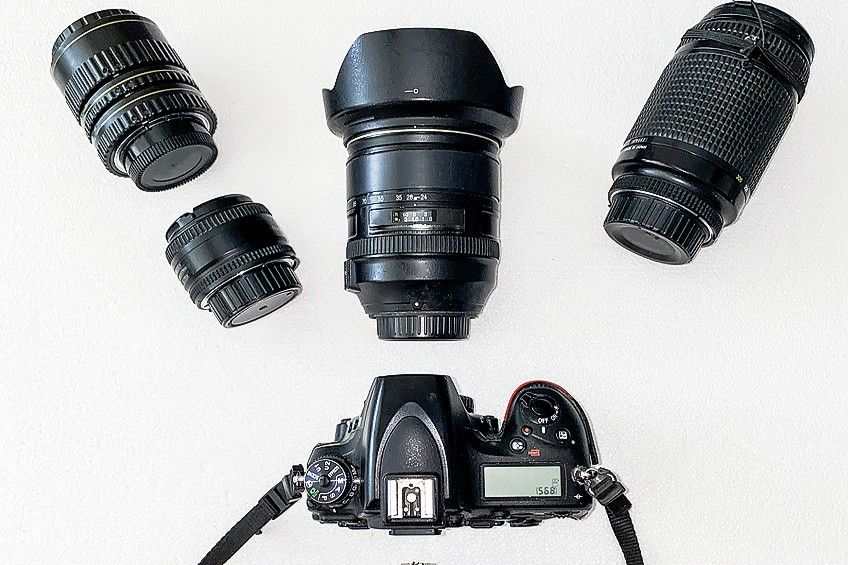
Tripods
Tripods can be handy for portrait photography, although they are not always required. It is entirely dependent on the circumstance and the impression you wish to accomplish with your images. If you’re shooting in poor light, a tripod might help you keep the camera steady and avoid blur. A tripod is also required if you employ a longer shutter speed to record ambient light or to create purposeful motion blur. A tripod can assist you to keep the camera stable and lessen the chance of the camera shaking when you have a large camera or heavy lenses.
This is especially critical when shooting with a shallow depth of field when even minor movement might lead to a shift in the focus.
Lighting
Lighting gear is important in portrait photography because it lets you manipulate the shadows and light on your subject’s body and face, which may drastically alter the atmosphere and aesthetic of your photographs. Studio strobes are strong and adaptable lights that may be used to generate a variety of lighting effects. They are popular among commercial portrait photographers because they provide constant output, quick recycling periods, and the option to alter power output. Fluorescent, LED, and tungsten lights that offer a steady light source are examples of continuous illumination. These lights are less difficult to use than strobes because they enable you to observe the shadows and light on your subject in realtime.
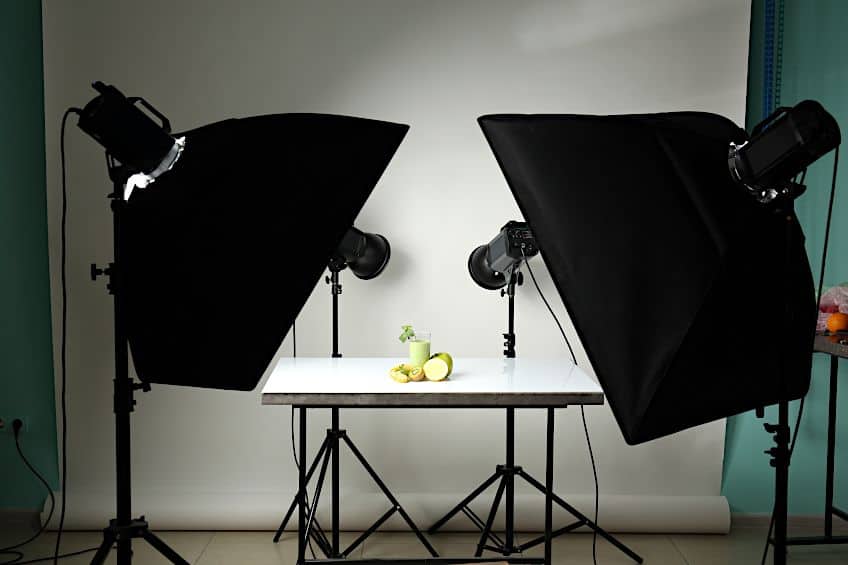
Tips and Tricks
Now you know everything you need to start taking portrait photographs. You know what equipment you need and what types of portrait photography there are to choose from. We have also explored a few compositional techniques that you can incorporate. But, we are not quite done yet!
We have included a few useful tips that will help your portrait photography reach the next level!
Establishing a Connection
Forming a rapport with your subject is essential since it can have a big influence on the photoshoot’s final outcome. A strong connection may aid in the creation of a calm and comfortable setting for the subject, culminating in more genuine and real expressions and postures in the photographs. Introduce yourself to the person and strike up a discussion to put them at ease. You may learn more about them by asking them about their hobbies, pastimes, or career. Speak with your subject in a straightforward and effective manner so that they know what you are looking for. Describe the aim of the photo shoot and your goals, and give specific directions on how to sit and in which direction to look.
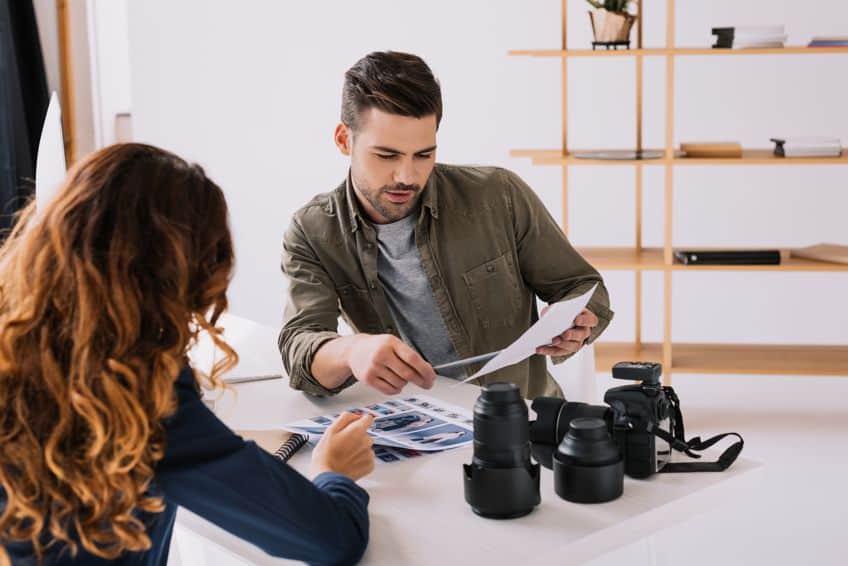
Being Mindful of Your Subject
Humor is an excellent technique to break the ice and establish a relaxed environment. Make your client feel more at ease and catch their natural smile by using humor. Share some of the photographs you’ve taken with your subject so they can see how they appear and feel more engaged in the process. This can also aid in the development of trust between your client and yourself. Always be respectful and courteous to your subject. Understand that they are offering you their time and trust and that you are there to work with them to create something wonderful.
It’s important that the subject does not feel uncomfortable or it will show in their expression in the final photo.
Attention to Details
An outstanding portrait image necessitates close attention to detail. The lighting in a portrait image can have a significant impact on the final result. Take note of the light’s quality and direction, and think about adding a reflector or diffuser to reduce harsh shadows or highlights. The arrangement of visual components in an image is referred to as composition. Consider utilizing the rule of thirds or other compositional principles to produce a balanced and visually pleasing photograph by paying attention to the positioning of your subject within the frame. Your subject’s position and expression can convey a variety of emotions and sentiments. Pay attention to your subject’s body language and facial emotions, and provide precise instructions to assist them to attain the ideal appearance.

Experimentation With Poses and Angles
With portrait photography, experimenting with postures and perspectives can result in innovative and fascinating photos. To produce unusual and dynamic compositions, experiment with photographing from different perspectives, including above or below your subject. Leading lines can focus the viewer’s attention on the topic and provide depth to the image.
To improve the composition, experiment with natural or architectural leading lines.
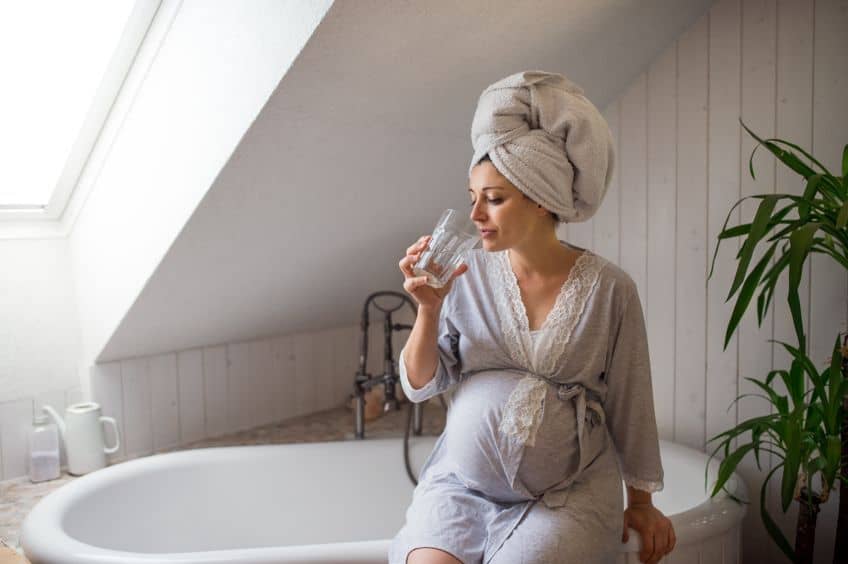
Using props could add character and intrigue to a portrait. Try including things that have importance for the client or that provide texture and dimension to the image. A portrait with movement could have more vitality and liveliness. Invite your subject to move or position dynamically, and play around with motion blur and freezing movement.
That concludes this article on portrait photography, including the various types that a client can choose from. We hope our suggestions about compositional techniques will be helpful to you and that our list of necessary equipment will make it easier for you to get on your way to becoming a portrait photographer. Our tips and tricks will also help improve your technique.
Take a look at our portrait photography webstory here!
Frequently Asked Questions
What Is Portrait Photography?
Creating portraits of people is an art genre that goes back many centuries. Therefore, it is only natural that it would be a popular genre in photography as well. Not only can a photographer capture a client’s likeness, but they can also add backdrops, lighting, and props to make it more unique and personal. These portraits can be used for family portraits, personal mementos, and for business purposes.
Are There Different Types of Portrait Photography?
When it comes to portrait photography, there are several different types a photographer can use. Each one will provide the image with a distinct aesthetic, such as studio, environmental, creative, and candid portrait photography. Before going for a portrait photo, research which one you think best portrays what you want to depict.
Jordan Anthony is a film photographer, curator, and arts writer based in Cape Town, South Africa. Anthony schooled in Durban and graduated from the University of the Witwatersrand, Johannesburg, with a Bachelor of Art in Fine Arts. During her studies, she explored additional electives in archaeology and psychology, while focusing on themes such as healing, identity, dreams, and intuitive creation in her Contemporary art practice. She has since worked and collaborated with various professionals in the local art industry, including the KZNSA Gallery in Durban (with Strauss & Co.), Turbine Art Fair (via overheard in the gallery), and the Wits Art Museum.
Anthony’s interests include subjects and themes related to philosophy, memory, and esotericism. Her personal photography archive traces her exploration of film through abstract manipulations of color, portraiture, candid photography, and urban landscapes. Her favorite art movements include Surrealism and Fluxus, as well as art produced by ancient civilizations. Anthony’s earliest encounters with art began in childhood with a book on Salvador Dalí and imagery from old recipe books, medical books, and religious literature. She also enjoys the allure of found objects, brown noise, and constellations.
Learn more about Jordan Anthony and the Art in Context Team.
Cite this Article
Jordan, Anthony, “What Is Portrait Photography? – Types of Portrait Photography.” Art in Context. May 30, 2023. URL: https://artincontext.org/what-is-portrait-photography/
Anthony, J. (2023, 30 May). What Is Portrait Photography? – Types of Portrait Photography. Art in Context. https://artincontext.org/what-is-portrait-photography/
Anthony, Jordan. “What Is Portrait Photography? – Types of Portrait Photography.” Art in Context, May 30, 2023. https://artincontext.org/what-is-portrait-photography/.






